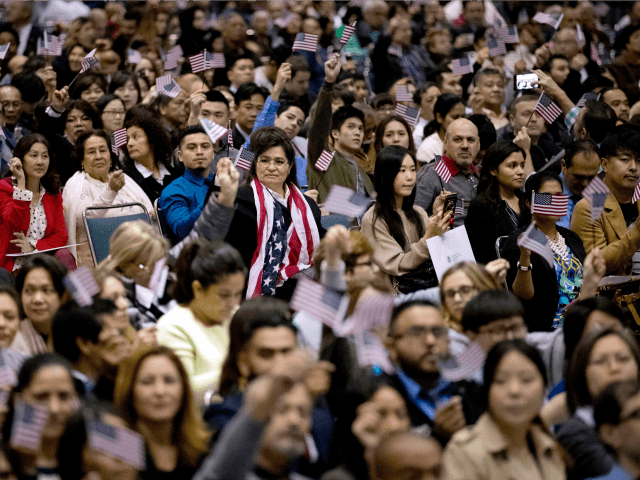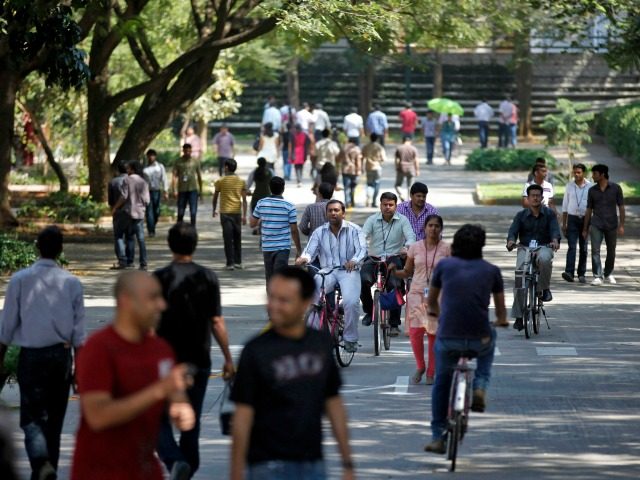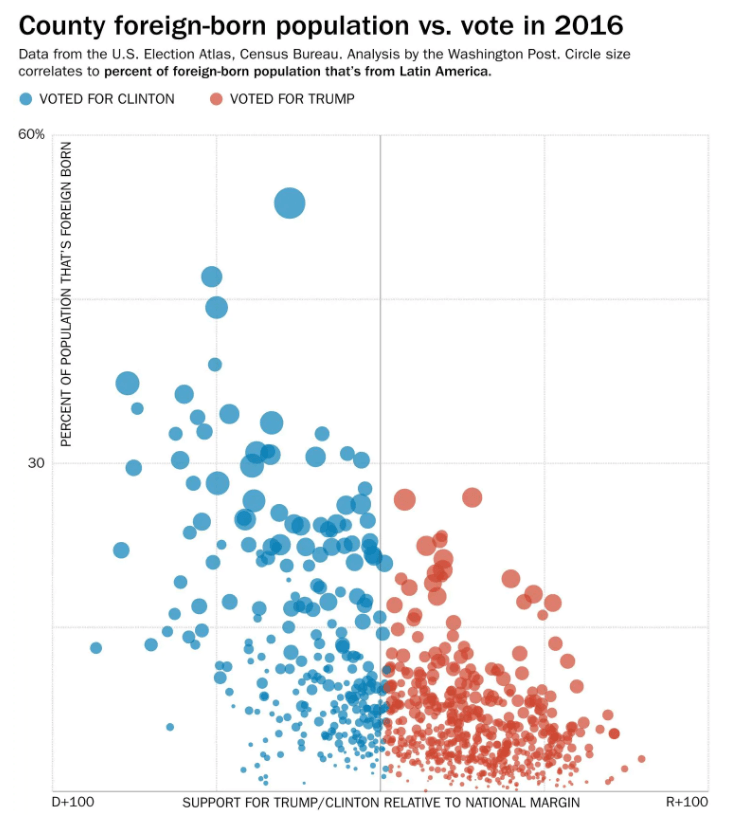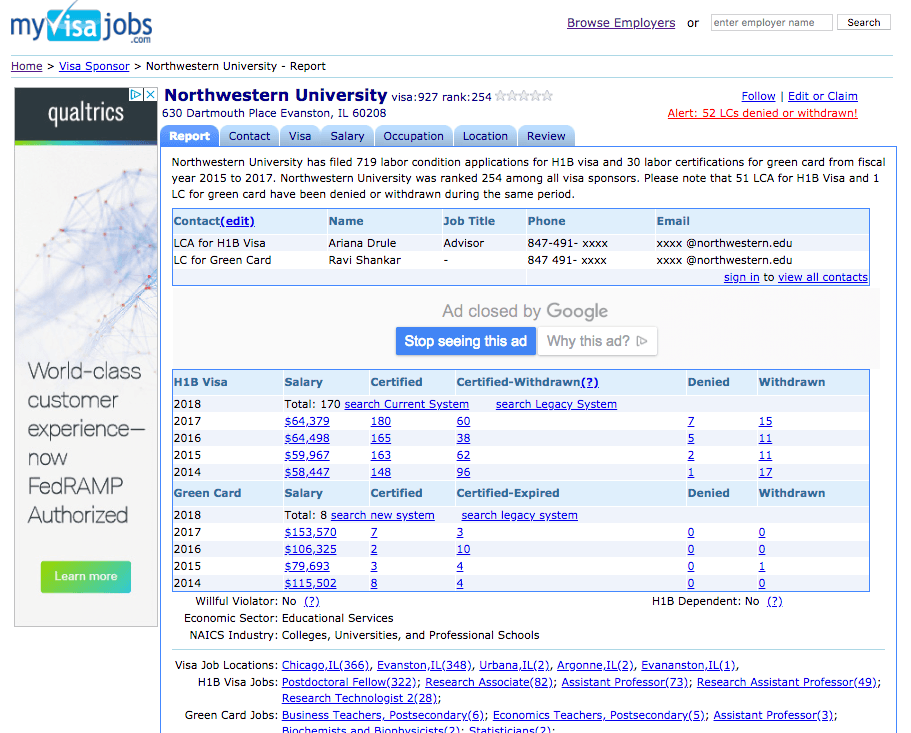AMNESTY
WOULD DOUBLE U.S. POPULATION, POVERTY, HOUSING AND HOMELESS CRISIS
http://mexicanoccupation.blogspot.com/2010/03/heritage-foundation-amnesty-would-add.html
"Critics argue
that giving amnesty to 12 to 30 million illegal aliens in the U.S. would have
an immediate negative impact on America’s working and middle class — specifically
black Americans and the white working class — who would be in direct
competition for blue-collar jobs with the largely low-skilled illegal alien population."
JOHN BINDER
"Additionally, under current legal immigration
laws, if given amnesty, the illegal alien population would be allowed to bring
an unlimited number of their foreign relatives to the U.S. This population
could boost already high legal immigration levels to an unprecedented high. An
amnesty for illegal aliens would also likely triple the number of
border-crossings at the U.S.-Mexico border." JOHN BINDER
“At the current rate of
invasion (mostly through Mexico, but also through Canada) the United States
will be completely over run with illegal aliens by the year 2025. I’m not
talking about legal immigrants who follow US law to become citizens. In less
than 20 years, if we do not stop the invasion, ILLEGAL aliens and their
offspring will be the dominant population in the United States”…. Tom
Barrett
U.S. Immigrant Numbers Hit 44.5 Million, Near 108-Year Record

The immigrant percentage of the U.S. population has hit 13.7 percent, near the 1910 record of 14.7 percent, according to the latest release by the Census Bureau.
In 2017, 13.7 percent of people (one in 7.3 people) in the United States were immigrants, up from 13.5 percent in 2016, and up from 5 percent (one in 20 people) in 1970, according to the bureau’s data.
The rising share means 44.5 million people in a population of 325.7 million people were born abroad. That 44.5 million includes roughly 22 million naturalized citizens, 11 million other residents, including more than 1.5 million foreign temporary visa-workers, plus roughly 11 million illegal immigrants, according to the bureau:
The millions of migrants are concentrated in the coastal metropolises, such as Los Angeles and New York, but many are migrating into interior states. According to the New York Times:
New York and California, states with large immigrant populations, both had increases of less than six percent since 2010. But foreign-born populations rose by 20 percent in Tennessee, 13 percent in Ohio, 12 percent in South Carolina and 20 percent in Kentucky over the same period.
The recent inflow includes a rising percentage of Asians from China, Vietnam, India, said the New York Times.
Brookings Institution analysis of that data shows that 41 percent of the people who said they arrived since 2010 came from Asia. Just 39 percent were from Latin America. About 45 percent were college educated, the analysis found, compared with about 30 percent of those who came between 2000 and 2009.
The Asian inflow include includes many college graduates because many of them are immigrating via the various business-backed programs for college-graduate visa-workers.
The Census Bureau may have undercounted the number of illegal immigrants, ensuring the immigrant population now exceeds the 1910 percentage, NBC News reported:
Illegal immigrants can be more difficult for surveyors to locate due to informal living arrangements, and some may avoid being included in surveys for fear of being reported to the government, researchers say.Jeffrey Passel, a demographer at Pew Research Center, has estimated that the actual immigrant population is likely 3 percent to 5 percent higher than the number in the Census Bureau’s American Community Survey.
A chart by the Washington Post suggests that this huge wave of migrants has changed politics by giving Democrats’ identity-politics ideology an electoral lock in counties where immigrants comprise more than 20 percent of the population:
The New York Times report, however, demurely ignored the political and economic impact of this huge wage of workers, consumers, and renters.
Some economic impacts are obvious, for example, immigrants expand the economy by working, consuming and renting real-estate. Some also raise the productivity of Americans by inventing new products, importing new goods, or develop novel services that allow Americans to produce more wealth or enjoyment per hour.
But many less-skilled migrants play their largest role by simply shifting small slices of wealth from person to person, for example, by competing up rents in their neighborhood or by competing down wages in their workplace. The crudest examples can be seen in agriculture.
European farms tend to buy labor-saving machines from well-paid European manufacturing workers because their farmworkers’ wages are high, but many U.S. farm companies simply use cheap legal and illegal immigrant labor while sharing the savings from not buying machines between profit-seeking investors and penny-counting consumers.
Of course, that cheap-labor business practice leaves Americans taxpayers to carry the off-work costs of immigrants, such as welfare programs, civic turmoil, Diversity, education costs for migrants’ children, and the occasional murder of an Iowa jogger, a massacre in a Florida nightclub, or the destruction of the Twin Towers in 2011.
But the immigration is not happening in a vacuum — it is happening as a vast wave of technology allows companies and investors to move products and assets (such as cheap migrant labor) around the world, at very low cost. This technological change has liberated societies to vastly enrich themselves — see China for example — even as it also seems to centralize power and wealth.
There is plenty of data to suggest that this combination of technological change and Congress’ passage of the 1965 immigration law have together since shifted a huge volume of wealth from younger, working Americans towards the older Americans who own real-estate, stocks, or companies.
That wage-pressure process began first among the interchangeable, blue-collar, unskilled Americans — such as farm workers — but it is shifting up the economic ladder to hit interchangeable, college-educated Americans. In President Donald Trump’s economy, blue-collar Americans are gaining amid modest restrictions on immigration while middle-class Americans are seeing slower gains as companies import more cheap college-graduates and also export their jobs to expanding foreign populations of clever, hardworking college-graduates.
This economic shift is reflected in another important economic change — the declining importance of Americans’ wages and salaries compared to other Americans’ dividends and stock prices. As the New York Times noted September 12:
Data from the Federal Reserve show that over the last decade and a half, the proportion of family income from wages has dropped from nearly 70 percent to just under 61 percent. It’s an extraordinary shift, driven largely by the investment profits of the very wealthy. In short, the people who possess tradable assets, especially stocks, have enjoyed a recovery that Americans dependent on savings or income from their weekly paycheck have yet to see. Ten years after the financial crisis, getting ahead by going to work every day seems quaint, akin to using the phone book to find a number or renting a video at Blockbuster” …In 2016, net worth among white middle-income families was 19 percent below 2007 levels, adjusted for inflation. But among blacks, it was down 40 percent, and Hispanics saw a drop of 46 percent. For many, old-fashioned hard work has simply not been a viable path out of this hole. After unemployment peaked in the fall of 2009, it took years for joblessness to return to pre-recession levels. Slack in the labor market left the employed and unemployed alike with little leverage to demand raises, even as corporate profits surged.Maybe it was inevitable that when half the population watches its wages stagnate while the other half gets rich in the market, the result is President Donald Trump and Brexit.
Unsurprisingly, many legislators are under severe pressure from donors to preserve the current national economic strategy of growth-by-immigration. In February 2018, for example, a loose alliance of business-first Republicans, pro-migration Democrats, and progressive media blocked President Donald Trump’s “Four Pillars” immigration reforms which would shift the United States back towards a low-immigration/high-wage economy.
Economists, investors, talking heads and political advocates in the Democratic and Republican parties are deeply reluctant to draw any connection between the immigration inflow of consumers, workers, and renters, and the economic shift from wages to stocks.
But the linkage is often hinted at. For example, Noah Smith, a pro-immigration, pro-diversity writer for Bloomberg News empire, wrote a column in July 2018 saying that the 1924 immigration cutbacks helped create the 1929 crash:
The housing crash of the mid-1920s might well have been a direct result of the curtailment of immigration. And if the Great Depression and/or the stock crash of 1929 was caused or exacerbated by that housing crash, there’s a clear and direct link between immigration restriction and the U.S.’s worst economic crisis of the 20th century. The reduction in agglomeration effects reported by Ager and Hansen probably also contributed to lower corporate earnings and sapped vitality in American cities.
Yet Smith is silent about the flip-side of immigration cuts — the impact of the 1965 immigration expansion law, which has added up to 44.5 million consumers, workers and renters to the United States’ marketplace.
Immigration Economics
Overall, the Washington-imposed economic policy of economic growth via immigration shifts wealth from young people towards older people by flooding the market with cheap white-collar and blue-collar foreign labor.
Four million young Americans will join the workforce this year, but the federal government will also import 1.1 million legal immigrants, and allow an army of at least 2 million visa-workers to work U.S. jobs, alongside asylum-claiming migrants and illegal aliens.
That flood of outside labor spikes profits and Wall Street values by cutting salaries for manual and skilled labor offered by blue-collar and white-collar employees. The policy also drives up real estate prices, widens wealth-gaps, reduces high-tech investment, increases state and local tax burdens, hurts kids’ schools and college education, pushes Americans away from high-tech careers, and sidelines at least 5 million marginalized Americans and their families, including many who are now struggling with opioid addictions. Immigration also pulls investment and wealth away from heartland states because investment flows towards the large immigrant populations living in the coastal states.
Census: Population to 420 million in 2060,
2/3rds immigrants, 79 million
https://www.washingtonexaminer.com/washington-secrets/census-population-to-420-million-in-2060-2-3rds-immigrants-79-million
by Paul Bedard
An immigrant woman from
Honduras carries her baby inside the Catholic Charities of the Rio Grande
Valley on Saturday, June 23, 2018, in McAllen, Texas. Families, who have been processed
and released by U.S. Customs and Border Protection, wait inside the facility
before continuing their journey to cities across the United States.
The U.S.-born baby is, of course, a U.S. citizen, whose illegal
alien parents are eligible to receive, on the baby’s behalf, food stamps,
nutrition from the Women, Infants, and Children (WIC) program, and numerous tax
benefits, including the EITC.
Most importantly, the newborn is deportation insurance
for its parents. Illegal aliens facing deportation can argue that to deport one
or more parents would create an “extreme hardship” for the new baby. If an
immigration officer agrees, we’ve added a new adult to the nation’s population.
At age 21 the former birthright citizen baby can formally apply for green cards
for parents and siblings, and they, in turn, can start their own immigration
chains.
Rep. Yoder’s India Lobby Offers $$$ to Jump Line for Green Cards

A group of Indian visa-workers is offering to pay the federal government $1,500 per family to jump the line for green cards, according to a friendly report by the McClatchy news bureau.
The proposed trade would send just $1,500 from each Indian family to the federal treasury in exchange for a fast-track to the hugely valuable prize of citizenship for at least 100,000 outsourcing-workers and their family members.
That small payment would save the Indians from paying lawyers’ fees, allow them to compete directly against American professionals for jobs, and allow them to quickly begin the chain-migration process for their many parents and siblings. The money could be used to fund the Federal Emergency Management Agency, say the advocates, who are also hoping their proposal will be supported by their ally, Kansas GOP Rep. Kevin Yoder.
“It goes from insulting to preposterous to propose such a thing,” countered Jessica Vaughan, policy director at the Center for Immigration Studies. She continued:
It is insulting for them to think they should get to jump in line ahead of others for paying a ridiculously low sum of money, and it is preposterous [for them] to think they somehow are preferred immigrants over millions of others who have been sponsored and are waiting their turn in line.
The McClatchy news service reported the offer from the Indian group, Immigration Voice:
Immigration lobbyists are pitching a plan to pay for disaster relief by charging high-skilled workers from India and China a fee to obtain green cards.And they’re leaning hard on Rep. Kevin Yoder, R-Kansas, to help …under this proposal green card applicants from certain countries could pay an additional fee to bypass the green card backlog. The money would be would be earmarked for disaster relief, which [the group’s lawyer also] said would increase the chances of passing green card policy reforms.An additional $1,500 green card fee for all employment-based Chinese and Indian immigrants would raise $1.5 billion over 10 years, according to an analysis by Immigration Voice. A fee of $2,500 would raise another $1 billion …
In January, the group said their funds could be used to pay for a border wall, said McClatchy:
Mexico refuses to pay for President Donald Trump’s wall, but advocates representing another group of foreign workers legally in the U.S. say they would eagerly raise billions for the barrier if it’d help them get green cards faster.
Who? Under the proposal, Indian and Chinese tech workers would step up and kick in $2,500 each or more in fees if it meant they could get their green cards after five or six years instead of waiting decades as some do now.“The Indian high-skilled workers will gladly, enthusiastically and happily pay for the wall if given an opportunity to do so in order to get fair treatment on green card waiting times,” said Leon Fresco, an attorney for Immigration Voice, an advocacy group working with members of Congress on the measure.
The Immigration Voice group says it represents up to 300,000 Indian outsourcing workers, plus up to 300,000 family members, who are waiting for green-cards that have been sponsored by their employers. The group is already working closely with Yoder to pass a fast-track green-card bill in the 2019 appropriations bills.
Indian advocates say some Indians visa-workers face a waiting line of up to 150 years to get a green card. The problem, they say, is the so-called “country caps” on the distribution of the 140,000 employer-based visas awarded each year. Those caps theoretically limit nationals of each country to just 7 percent of the annual 140,000 visas, chiefly to ensure a wide distribution of the visas to diverse countries.
But most of the Indians get through the green-card line in several years, partly because the complex visa rules allow roughly 23,000 Indian workers and families get green cards every year. That actual inflow is far higher than the notional 9,800-per-year limit set by the 7 percent country cap.
There are roughly 300,000 Indians in the green-card line because brand-name U.S. companies, hospitals, banks, and universities have outsourced millions of U.S. jobs to Indian subcontractors, such as Infosys, Cognizant or Wipro. Most of the 300,000 Indians in the line were imported for temporary U.S. jobs via the L-1 and H-1B visa-worker programs and were later rewarded when their employers sponsored them for the huge prize of green cards.
Nationwide, the U.S. government helps companies keep a population of roughly 1.5 million visa-workers in American white-collar jobs. The various visa programs — H-1B, L-1, J-1, H4 EAD, OPT, TN — allow employers to hire cheap foreign doctors, therapists, programmers, engineers, accountants, designers, architects, managers, recruitment specialists, P.R. experts, and many other professionals. These huge labor programs boost the stock market by lowering salaries for many American college graduates and also push many Americans into lower-tech, lower-wage careers, such as journalism.
For example, Northwestern University is using the H-1B program to hire roughly 170 foreign graduates each year to fill science and teaching jobs for just $65,000 a year, according to government data provided by MyVisaJobs.com. U.S. science grads — whether young or old, male or female, Asian, Latino, African-American, or European-American — were not offered those university jobs.
The university is paying its H-1Bs workers just above Chicago’s “living wage” of $59,215, as estimated by CNBC.
In July, Yoder worked with the Indian group to win initial approval for a bill that would abolish the country caps.
If the country caps are removed by Yoder’s bill late this year, U.S. Fortune 500 companies and Indian outsourcing firms will be able to offer fast-track green cards to roughly five times more Indian hires each year. That giveaway will help investors greatly accelerate the organized outsourcing of middle-class healthcare and technology jobs to lower-wage Indian employees, so boosting the investors’ stock values.
The new green-cards-for-cash plan is being offered to Yoder because he chairs the House homeland defense appropriations committee, which oversees immigration and emergency management. Immigration Voice’s political advisor, Leon Fresco, told McClatchy:
“At the end of the day, Yoder has a massive hand here because he needs to write the FEMA legislation,” said Leon Fresco, the strategist and general counsel for Immigration Voice. “One way or another there’s no way this doesn’t go through Yoder.”
Fresco notes that Yoder plan to eliminate the country caps will not raise the annual distribution of green cards to H-1B workers.
But Yoder’s plan will allow U.S. and Indian companies to recruit and import more workers via the L-1 visa program. The program has no cap and it allows visa-workers to be paid minimum wages, even for white-collar jobs.
The State Department is already issuing almost 80,000 multi-year L-1 visas each year, creating a resident population of perhaps 400,000 L-1 workers. Some L-1 visa-workers are used to set up new businesses in the United States, but many are used for outsourcing work, alongside H-1B visa-workers.
The resident population of H-1B workers with three-year visas is at least 500,000 and may reach 900,000.
Yoder’s dive into the middle-class outsourcing controversy comes as he faces a difficult election campaign in a district that voted for Hillary Clinton in 2016. His district already includes employers who have outsourced white-collar jobs to 1,400 H-1B workers, according to H-1BFacts.com.
Amnesty advocates rely on business-funded “Nation of Immigrants” push-polls to show apparent voter support for immigration and immigrants.
But “choice” polls reveal most voters’ often-ignored preference that CEOs should hire Americans at decent wages before hiring migrants. Those Americans include many blue-collar Blacks, Latinos, and people who hide their opinions from pollsters. Similarly, the 2018 polls show that GOP voters are far more concerned about migration — more properly, the economics of migration — than they are concerned about illegal migration and MS-13, taxes, or the return of Rep. Nancy Pelosi.
Yoder’s office did not dismiss the cash-for-green-cards plan. According to McClatchy:
“We are still in the early stages of looking into this specific proposal, but we remain committed to ensuring that (a green card bill) gets across the finish line and becomes law,” Yoder’s spokesman C.J. Grover said in an email.
Yoder is expected to push his country-caps plan in the must-pass homeland defense budget, during the lame-duck session after the voters have cast their votes and as retiring legislators look for lobbying jobs with business.
Many reports show high levels of corruption in the H-1B program, reflecting the high levels of corruption in the home countries. For example, corruption in India is ranked as the 81st most corrupt country, partly because of caste vs. caste hostility, according to Transparency International. The corruption debilitates the country’s economic growth, say critics.
The home-country corruption has ensured numerous arrests of Indian executives in the United States, plus a series of lawsuits against large Indian outsourcing companies. The lawsuits charge the Indian companies with discriminating against Americans to ensure the placement of more Indian workers in U.S. jobs.
“The most objectionable result of lifting the country caps would be to reward the [American] companies that have used the [temporary] guest-workers to replace Americans,” said Vaughan. “It completes the process for them … it institutionalizes this in a way that will cause permanent harm to Americans who aspire to white-collar jobs.”
Moreover, the “guest-worker visas are not meant to be a stepping stone for green cards,” she added. But for Indian visa-workers, “that was their expectation, and it was wrong, and now they are demanding their expectations be filled … They think adding a little money to the discussion might be enough to grease the way, but that is not the way Americans see their immigration system,” she added.
“Americans value fairness in our immigration system,” along with the need for some diversity, minimal corruption and a first-come-first-served policy, she said.
Also, the Indians’ offer to pay for approval by Yoder and other legislators to jump the line “shows the disdain they have for other categories” of would-be immigrants, said Vaughan. “To suggest for a mere $1,500 they should be allowed to jump in line, that they are somehow more worthy … in the way you would try to buy off a police officer for not writing a ticket — it smacks of the same kind of mentality,” said Vaughan.
The $1,500 payment is also trivial, she said, because the acceleration of green cards would be extremely valuable, she said. It would allow the visa-workers to quit their low-wage outsourcing jobs sooner, and also accelerate the arrival of their elderly parents via chain-migration rules, she said. Parents “are one of the most expensive demographic groups [for taxpayers] because of their likely need for health care benefits, and the fact that they have not contributed over a lifetime to Social Security or any other social welfare program through taxes,” she said.
The promised payment of $1.5 billion is enough to keep the federal government operating for four hours. In 2017, the federal government’s budget was $3,664 billion.
But the Indian lobby has managed to win sponsorship from more than 80 percent of the House for Yoder’s H.R. 392 bill to remove the country caps. Their lobbying campaign relies on frequent group visits to member’s district offices, plus the persuasive power of the Indian doctors from local hospitals and the wives of visa-workers, Fresco told Breitbart News.
Yoder’s bill might get passed this Fall, Vaughan said. “I don’t think most members of Congress understand the implications [of the country cap removal] and they are attracted [to the argument] that it is somehow more fair to do away with the per-country caps,” she said.
“Per-country caps ensure a diverse flow of immigrants from many countries,” said RJ Hauman, government relations director at the Federation for American Immigration Reform. He continued:
Without those caps in place, India will consume the lion’s share of the permanent skilled visas, creating a discriminatory system that favors a single foreign nation. H.R. 392 shreds any pretense that programs like the H-1B and L visa [programs] are anything but a track for intending immigrants – not a short-term foreign labor program. No one promised [these Indian] temporary guest workers that they would ever have the chance to immigrate permanently.
“Allowing temporary guest workers the opportunity to pay for green cards – no matter where the money goes – completely undermines the integrity of our immigration system,” said Hauman, adding:
The last thing we need is another pay-for-play route to citizenship like the fraud-ridden EB-5 program.
Immigration Economics
Overall, the Washington-imposed economic policy of economic growth via immigration shifts wealth from young people towards older people by flooding the market with cheap white-collar and blue-collar foreign labor.
Four million young Americans will join the workforce this year, but the federal government will also import 1.1 million legal immigrants, and allow an army of at least 2 million visa-workers to work U.S. jobs, alongside asylum-claiming migrants and illegal aliens.
That flood of outside labor spikes profits and Wall Street values by cutting salaries for manual and skilled labor offered by blue-collar and white-collar employees. The policy also drives up real estate prices, widens wealth-gaps, reduces high-tech investment, increases state and local tax burdens, hurts kids’ schools and college education, pushes Americans away from high-tech careers, and sidelines at least 5 million marginalized Americans and their families, including many who are now struggling with opioid addictions. Immigration also pulls investment and wealth away from heartland states because investment flows towards the large immigrant populations living in the coastal states.

A Border Patrol agent takes down information of a man and his son who crossed the Rio Grande from Mexico into the United States in Hidalgo County, Texas, on May 26, 2017. (Benjamin Chasteen/The Epoch Times)
US Sees 38 Percent Jump in Families Apprehended at Southwest Border
Immigration loopholes spur rush for the border, immigration officials suggest
WASHINGTON—Cross the border into the United States with a child, claim asylum, and you’re home-free.
That’s the message smugglers and migrants are hearing, according to the Department of Homeland Security (DHS).
“Smugglers and traffickers understand our broken immigration laws better than most and know that if a family unit illegally enters the U.S., they are likely to be released into the interior,” DHS spokesman Daniel Hetledge said in a Sept. 12 statement. “Specifically, DHS is required to release families entering the country illegally within 20 days of apprehension.”
The number of family units crossing the southwest border illegally and claiming asylum jumped 38 percent in August over the previous month, according to the latest numbers published by Customs and Border Protection (CBP).
More than 12,700 individuals who were part of a family unit (at least one adult and one child) were apprehended by Border Patrol after crossing the border in August. That’s 3,500 more than in July.
“It’s really telling that the numbers have increased so much in a one-month period, during the time when this was in the news so much,” said Jessica Vaughan, director of policy at the Center for Immigration Studies. “The court-imposed catch-and-release policy is a major enticement for people to come here.”

CBP said the increase in family units is “a clear indicator that the migration flows are responding to gaps in our nation’s legal framework.”
“We know that the vast majority of family units who have been released—despite having no right to remain in any legal status—fail to ever depart or be removed,” Hetledge said.
He said that through the third quarter of fiscal 2018, only 1.4 percent of family units have been repatriated to their home country from non-contiguous countries such as El Salvador, Guatemala, and Honduras. Individuals from those three countries make up almost 98 percent of family units apprehended.
Catch-and-Release
At issue is a court judgment dating back to 1997—called the Flores Settlement Agreement—that mandates immigration authorities to release family units from custody after 20 days. On top of that is a 2015 Obama-era amendment that says children can’t be detained in adult facilities—forcing either separation or release.
That means the administration can’t prosecute illegal border crossers without separating the adults and children—which is what started happening in April when a “zero tolerance” policy was reinvigorated.
An outcry ensued when around 2,500 children were temporarily separated from adults who were in custody pending their cases.
Trump issued an executive order on June 20 to stop the separations, and a court injunction gave the government less than a month to reunite the families.
The 2,500 children represented about one-quarter of the number of family units that entered each month in the last several months. Most have since been reunited; however 14 of the adults were discovered to not have a familial relationship with the child or were convicted criminals, for crimes including rape, child abuse, and kidnapping.
Without the ability to separate adults for prosecution, authorities have no choice but to release them without consequence.
“This is exactly what even the Obama administration lawyers predicted when the judge ruled back in 2015 that they could not detain kids with their parents,” said Vaughan.
She said the continuation of catch-and-release is a “major motivation” for illegal entry.
“The family-separation uproar was not really representative of all cases, and it certainly didn’t seem to have deterred many people from coming,” Vaughan said.

Amendment Denied
Trump’s executive order also resulted in Attorney General Jeff Sessions requesting amendments to the Flores agreement. One would allow Immigration and Customs Enforcement (ICE) to detain families together in ICE family residential facilities, and the second would allow ICE to detain families longer than 20 days.
The amendments would enable an immigration case to be adjudicated while the aliens are in custody, which takes a median of 40 days, rather than years if they’re released into the country.
It also means that those who don’t qualify for asylum (usually around 80 percent), or some other immigration benefit, can be readily repatriated.
On July 9, the U.S. District Court for the Central District of California, which issued the Flores order, declined to amend the 20-day provision.
Meanwhile, on June 28, the Defense Department said it had been asked by DHS to help house and care for “an alien family population of up to 12,000 people,” a Defense spokesman said.
The total number of family units apprehended by Border Patrol so far in fiscal 2018 is almost 90,000.







No comments:
Post a Comment